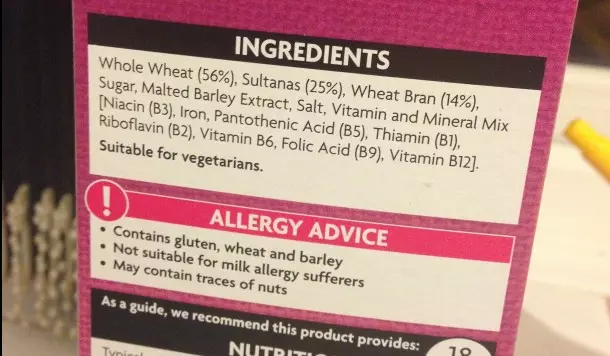Need help? We’re here!
Our expert customer service team is ready to help you with any questions or concerns you may have. Real time help is available Monday through Friday 9AM - 6PM EST- (888) 391-7165
- Chat live with support
- support@sheetlabels.com
 Millions of Americans are affected by food allergens—some severe and some minor. Many food allergens are not life-threatening, but others are. For this reason, congress made the decision to pass the Food Allergen Labeling and Consumer Protection Act (FALCPA) in 2004, which requires businesses to label domestic and imported products that contain any protein derived from the eight most common food allergens. The FALCPA requires that brands customize labels to include any of the eight common food allergens, including milk, fish, eggs, crustacean shellfish, tree nuts, peanuts, soybeans, and wheat. These eights foods in addition to any protein derived from them, are all considered “major food allergens” and should be labeled properly for the safety of your customers.
Millions of Americans are affected by food allergens—some severe and some minor. Many food allergens are not life-threatening, but others are. For this reason, congress made the decision to pass the Food Allergen Labeling and Consumer Protection Act (FALCPA) in 2004, which requires businesses to label domestic and imported products that contain any protein derived from the eight most common food allergens. The FALCPA requires that brands customize labels to include any of the eight common food allergens, including milk, fish, eggs, crustacean shellfish, tree nuts, peanuts, soybeans, and wheat. These eights foods in addition to any protein derived from them, are all considered “major food allergens” and should be labeled properly for the safety of your customers.
If you sell a product that contains any of these eight food allergens, you are required by law to label them a certain way. Companies should customize labels to include the name of the actual ingredient (such as buttermilk or lecithin) in addition to its common allergen (milk or soy). If your product contains milk products, you have a couple of different labeling options. You can either list the ingredients with the allergen next to it in parenthesis, or you can include a warning at the bottom of the list of ingredients. For example:
or

These days, there is a growing number of food intolerances and allergies that are not included under the FALCPA. Less common food allergens include red meat, avocados, sesame seeds, marshmallows (or gelatin sensitivity), corn, mango, dried fruit, or hot dogs. The FDA does not regulate poultry, most meats, certain egg products, or most alcoholic beverages, so consumers must use their own discretion before eating or drinking an item; however, brands should do their best to inform their customers of any potential food allergens or worrisome ingredients.
To simplify things for your customers, you may also wish to take labeling one step further. Due to the rise in gluten-free, dairy-free, and soy-free diets, many companies are becoming certified so they can include seals on their product labels that show they are certified gluten-free, dairy-free, or soy-free. When you customize labels to include seals, you can save shoppers the hassle of reading each and every ingredient on your label. Even though many customers will continue to read each and every ingredient to ensure that a product is safe for them to consume, seals can provide customers with peace of mind knowing that the product is completely free of food allergens or intolerances. Popular certification programs include Certified Gluten-Free, Gluten-Free Certification Program, Canadian Celiac Association, and Certified Vegan.